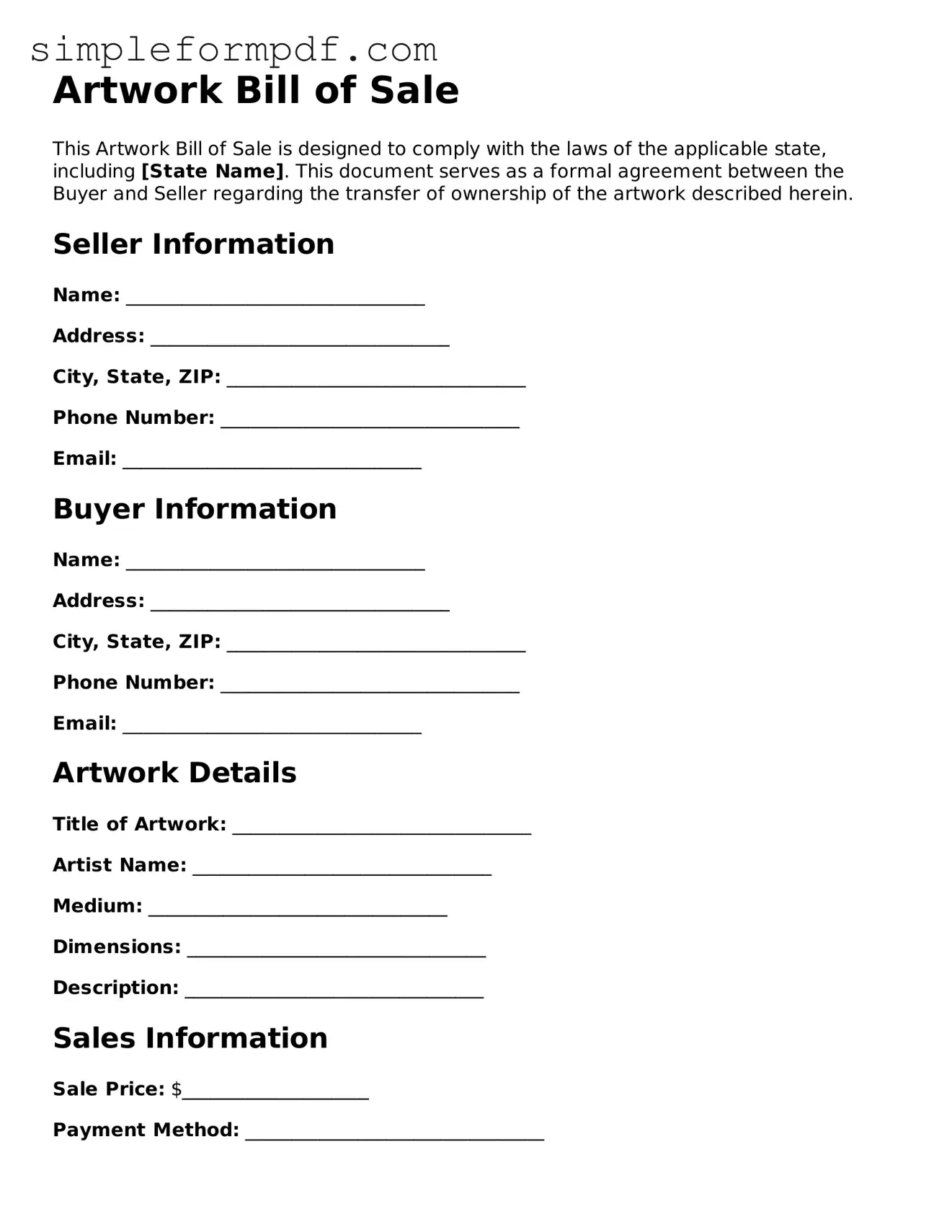Artwork Bill of Sale
This Artwork Bill of Sale is designed to comply with the laws of the applicable state, including [State Name]. This document serves as a formal agreement between the Buyer and Seller regarding the transfer of ownership of the artwork described herein.
Seller Information
Name: ________________________________
Address: ________________________________
City, State, ZIP: ________________________________
Phone Number: ________________________________
Email: ________________________________
Buyer Information
Name: ________________________________
Address: ________________________________
City, State, ZIP: ________________________________
Phone Number: ________________________________
Email: ________________________________
Artwork Details
Title of Artwork: ________________________________
Artist Name: ________________________________
Medium: ________________________________
Dimensions: ________________________________
Description: ________________________________
Sales Information
Sale Price: $____________________
Payment Method: ________________________________
Terms and Conditions
The Seller agrees to sell, and the Buyer agrees to buy, the artwork described above under the following terms:
- The artwork is sold as-is, with no warranties.
- The Buyer acknowledges they have examined the artwork and accepts its condition.
- The Seller affirms that they have the legal right to sell the artwork.
- Upon full payment, ownership of the artwork shall transfer to the Buyer.
- This Bill of Sale constitutes the entire agreement between the parties.
Signatures
Seller Signature: ________________________________
Date: ________________________________
Buyer Signature: ________________________________
Date: ________________________________
This Bill of Sale is effective as of the date of signing.
